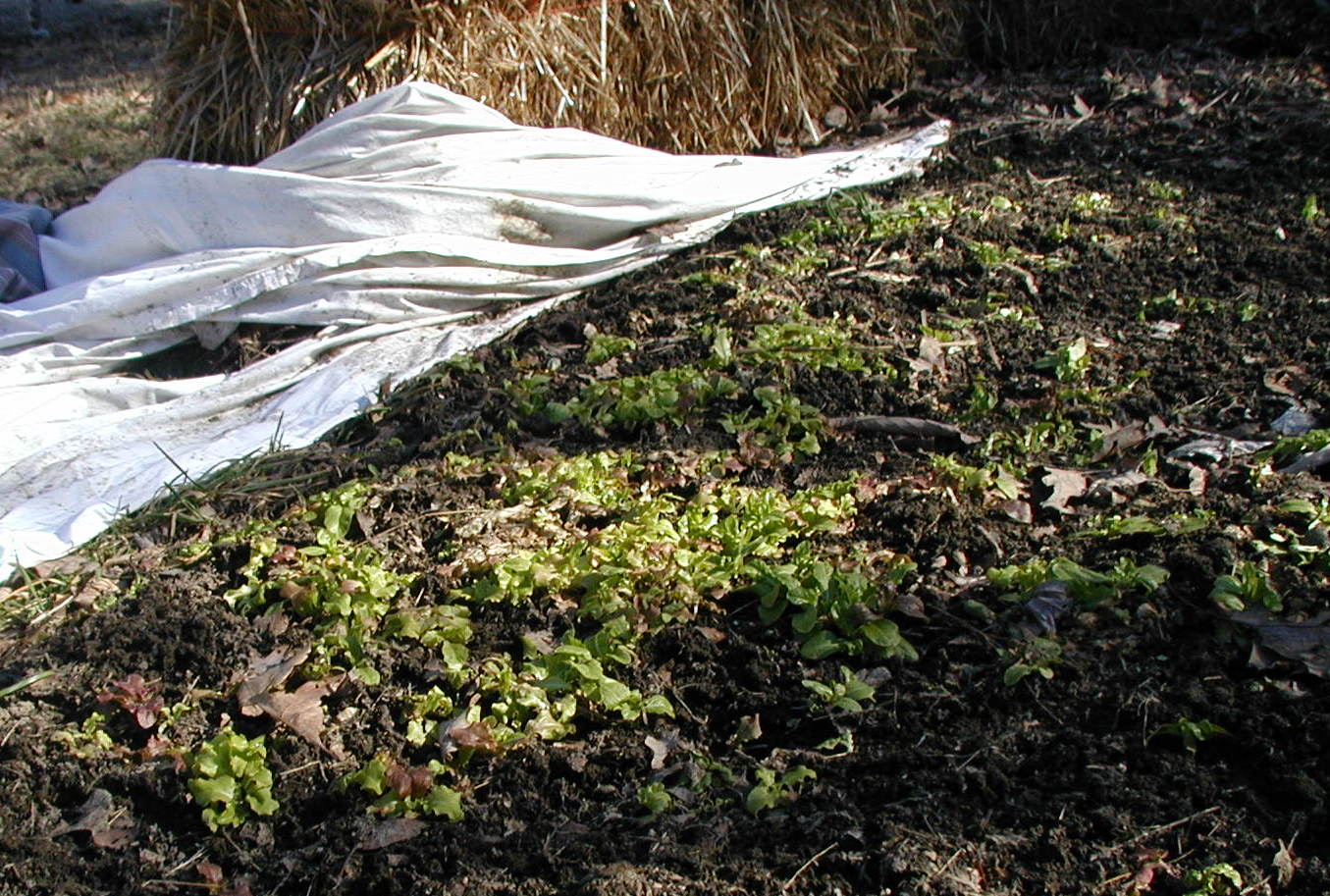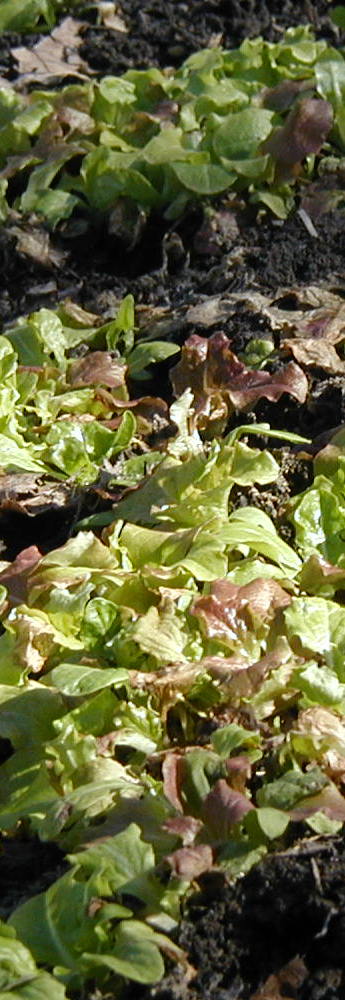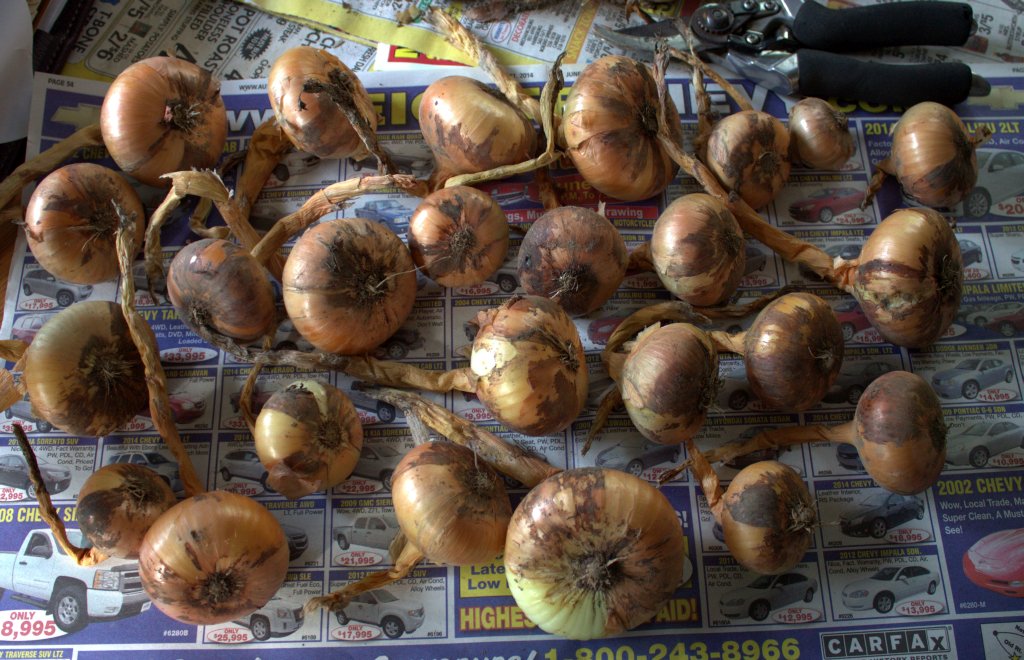We’re all happy around here that Spring has sprung. Even though we had a 3-inch snowfall on the First Day of Spring, that didn’t damper the mood as the white stuff was practically gone the next day.
Nights are still in the 20s so we really can’t get out and start gardening in earnest yet. The ground is just too cold to germinate seeds. They need more warmth for that.

How could we possibly have winter lettuce that isn’t growing in a greenhouse? Since it was planted in the Fall we could call it Autumn lettuce, but it did survive over the Winter so we like to call it Winter Lettuce.
Lettuce can be sown directly on the ground in the fall. The seeds will have the warmth they need to germinate and baby leaves will have enough time to grow so we can enjoy them in salads and sandwiches up until late October or November.
If the little plants are protected from freezing conditions, they can survive through winter. That’s what we call Winter Lettuce.
In our first attempts to keep plants growing after the first frost in Autumn, we used a hot box made of old windows to protect the lettuce from freezing weather. That worked well for a few weeks, but when the weather turned really cold in January, the hot box no longer functioned to keep them warm.
A couple of years ago I wanted to see how long into the cold winter season we could still cut baby lettuce if the lettuce plants were protected only by a piece of material thrown over them, like a bed sheet or thin curtain.
The purpose of the material covering is two-fold. First, frost will lay on the top of the cloth, thus keeping the leaves from being frozen by a hard frost. Second, keeping the entire lettuce patch covered will help to retain heat from the Earth so that the ground doesn’t become frozen hard where the lettuce is growing.
We were pleasantly surprised that there was any survival at all. Indeed, I was very pleased to have cut some fresh lettuce in January the first year we tried the sheet method!
Last year my sheet method of protecting lettuce didn’t work so well. After the festivities on Thanksgiving Day I forgot to re-cover the lettuce and it all was killed by a hard freeze that night. That was upsetting and it’s the only real caveat of the sheet method.
That is, you have to remember to put the covers on the lettuce in the late afternoon if the sheets were removed during the day. Wait too long, or forget it completely, and the lettuce may get frozen out.

This year’s winter lettuce crop is looking great. Last October a mix of lettuce seed was scattered in the location where the tomatoes had been in the garden in the summer. Seeds sprouted and grew a few inches tall before an old bed sheet was used to blanket the little plants. For the most part the sheet was not removed during the day so as not to forget to replace it at night.
Snow came often this winter and once it did the ground was white for weeks. Snow covered the sheet for weeks and I wondered how all that weight would affect the little plants.
The extra weight of the snow didn’t seem to matter to the survival of the lettuce plants. Some leaves were flattened a bit, but they’re still green and they can contribute to growing more lettuce leaves.
Any of you salad lovers should give the sheet method a try this Fall on a patch of lettuce. As long as you remember to cover the lettuce patch before nightfall, you can uncover it during the daylight hours to enhance growth of more leaves.
But honestly, leaving the sheets on the lettuce for a couple more weeks is probably the wisest path to take. The plants will receive some light and heat through the cloth material and there would be no danger of losing the entire crop if the covering was forgotten.
“Let us” all know how it works for you!
